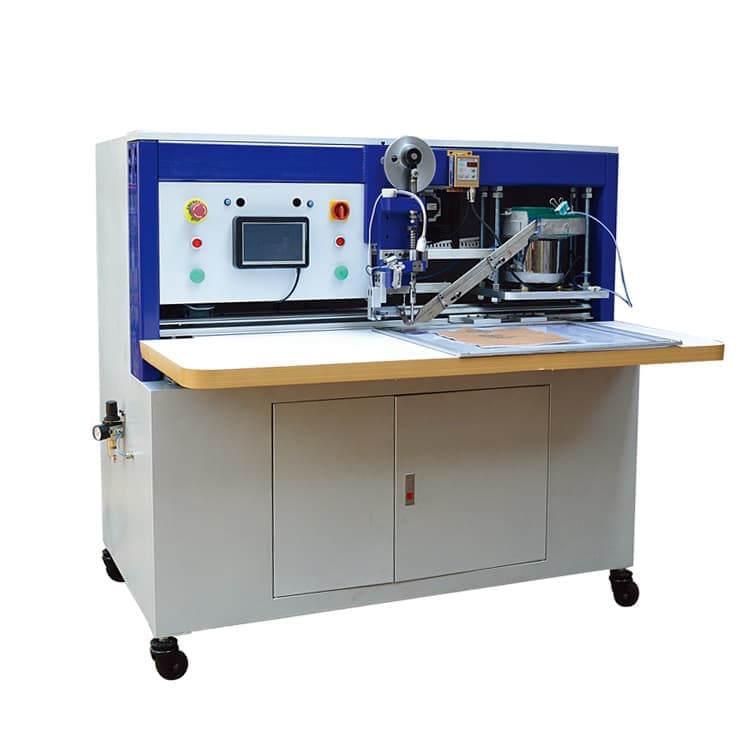We often hear about sewing machines of different specifications, such as Jeans Sewing Machine, but do you know the history of sewing machines? Hand sewing is an art form that is over 20,000 years old. The first sewing needles were made from bone or animal horn, and the first sutures were made from animal muscle. The iron needle was invented in the 14th century. The first sight of needles appeared in the 15th century.

The Birth of Machine Sewing
The first possible patent related to mechanical sewing was a 1755 British patent issued to the Germans for a patent for a needle designed for the machine, but, if it existed, the patent did not describe the rest of the machine.
Several inventors tried to improve sewing
English inventor and cabinetmaker Thomas St received the first complete patent for a sewing machine in 1790. It's unclear whether Saint actually built a working prototype of his invention. The patent describes an awl that punches holes in leather and passes a needle through the holes. Subsequent duplication of Saint's invention based on his patent drawings would not work.
In 1810, the Germans invented an automatic machine for sewing hats. Krems did not patent his invention, but it never worked to good effect.
An Austrian tailor made several attempts to invent a sewing machine, which was patented in 1814. All his attempts were considered unsuccessful.
In 1804, Thomas Stone and James Henderson received a French patent for "a machine for imitating hand sewing". In the same year, Scott John Duncan received a patent for a "multi-needle embroidery machine". Both inventions failed and were quickly forgotten by the public.
In 1818, the first American sewing machine was invented by John Adams Dodge and John Knowles. Their machines failed to sew any useful quantities of fabric before breaking down.
Timonnier: The First Functional Machine and the Riot
The first functional sewing machine was invented by French tailor Timonier in 1830. The machine used only one thread and one crochet needle, using the same chain stitch as embroidery. The inventor was nearly killed by a mob of angry French tailors who burned down his garment factory because they feared losing their jobs because of his new invention.
Walter Hunter and Elias Howe
In 1834, Walter Hunter built America's first (somewhat) successful sewing machine. He later lost interest in patenting because he believed his invention would result in unemployment. Hunt was never patented, and in 1846 the first US patent was issued to Elias Howe for "the process using threads from two different sources".
Elias Howe's machine has a needle in it. The needle is pushed through the cloth, creating a loop on the other side; it is then shuttled on the track so that a second thread is threaded through the loop, creating what is known as a lockstitch. However, Elias Howe later encountered problems defending his patents and marketing his invention. Building Special Industrial Machines is a development and trend from generation to generation.
For the next nine years, Elias Howe struggled, first to generate interest in his machine and then to protect his patents from imitators. His flat seam mechanism was adopted by others who were developing their own innovations. Isaac Singer invented the up-and-down motion mechanism, and Alan Wilson developed the rotary shuttle.
Isaac Singer vs. Elias Howe: The Patent Wars
Sewing machines were not mass-produced until 1850 when Isaac Singer built the first commercially successful machine. Singer built the first sewing machine in which the needle moved up and down rather than side to side, and the needle was driven by a foot pedal. Previous machines were hand cranked. However, Isaac Singer's machine uses the same lockstitch that Elias Howe patented. Elias Howe sued Isaac Singer for patent infringement and won in 1854, the sewing machine also used a lockstitch with two spools and a pointed needle; however, since Hunter renounced his patent Courts have since upheld Howe's patent.
If Hunter had patented his invention, Elias Howe would have lost his case, while Isaac Singer could have won. Since he lost, Isaac Singer has had to pay Elias Howe royalties.
Isaac Singer vs. Elias Hunt: The Patent Wars
Walter Hunter's 1834 eye-needle sewing machine was later reinvented by Elias Howe of Spencer, Massachusetts, and patented by him in 1846.
Every sewing machine has a curved, pointed needle that passes through the fabric in an arcing motion; and creates a loop on the opposite side of the fabric; and a second, carried by a shuttle that runs back and forth on a track through the loop. Thread creates locking stitches.
Elias Howe's design was copied by Isaac Singer and others, leading to widespread patent litigation. However, a court battle in the 1850s eventually resulted in Elias Howe obtaining a patent for the eye of the needle.
Elias Howe files lawsuit against largest maker of sewing machines for patent infringement. In his defense, Isaac Singer attempted to invalidate Howe's patent, showing that the invention was 20 years old, and that Howe should not have been able to claim a license to use his design, Singer was forced to pay anyone.
In 1873, Helen Augusta Blanchard (1840-1922) of Portland, Maine received a patent for the first Zigzag Sewing Machine. This zigzag seam better seals the seam allowance and makes the garment stronger. Helen Blanchard also patented 28 other inventions, including a Hat Sewing Machine, surgical needles, and other improvements to the sewing machine.
The first mechanical sewing machines are used in garment factory production lines. Sewing machines for home use were not designed and sold until 1889. By 1905, electric sewing machines were widely used. If you want to know more about sewing machines, you can browse our website, we also have Hat Sewing Machine For Sale.




